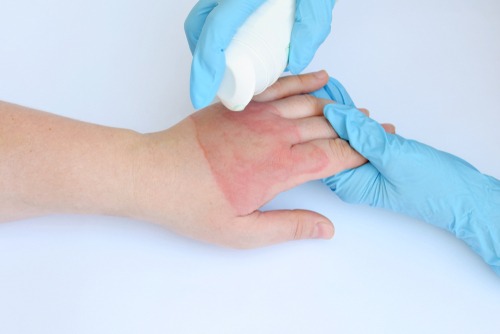Physicians pay attention to the depth and burn size to evaluate your burn injury. They measure burns by the percentage they cover your body. According to MSKTC, moderate to severe burn injuries include second and third-degree. Second-degree burns go through your second layer of skin, whereas third-degree burns damage both layers of skin and may continue to damage muscles, tendons and bones underneath.
Treating burn injuries requires different levels of wound care, dependent on your injury type.
Surgery for burn injuries
To treat large third-degree burns, physicians have to use skin grafts. The surgeon takes healthy skin from one part of your body during skin graft surgery and replaces the dead skin on the burn. For burns on the face or hands, your doctor may choose sheet grafts to reduce the appearance of the scar. Sheet grafts use one piece of skin with no holes. However, doctors have to put skin through a machine that causes small holes for larger burns. These meshed grafts have a pattern like stockings.
Wound care for burn injuries
If you have a second-degree burn during wound care, you may require antibiotic ointments to fight infection. Burns require a change of dressing every day and burns need washing with gentle soap. Some wound care dressings do not need constant changing. For instance, foams, silver dressings and impregnated gauzes can remain over the burn for longer.
If blisters develop, doctors may need to drain them. Use only non-stick gauze over blisters to reduce the chance of tearing the skin.
Following a burn injury, you need to keep the area moisturized. Moisturizer helps reduce the chance of itching, skin tearing and blistering.
